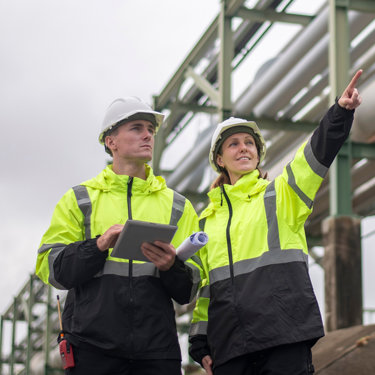
Environmental incident remediation
Ready to discuss your project?
Please leave your details and a member of our team will reach out to discuss your requirements in more detail and arrange next steps.
We help commercial organisations, regulators, or insurers manage the remediation following an environmental incident so that you can protect the environment, reduce fines, and prove the effectiveness of the strategy.
When faced with contaminated soils, groundwater, or building structures there are often multiple remediation options available to achieve the end goal of acceptable risk to identified receptors.
Options may be driven by the severity of contamination, the environmental setting, the accessibility of contamination, timescales, regulatory pressure, and the end target for the remediation. More recently, EA guidance has required that the sustainability of a remedial solution also be considered as part of the options appraisal.
Features and outputs
- Investigation and monitoring via continual data collection.
- Sustainable remediation options.
- Meet remediation targets with habitat restoration plans.
- Ongoing communication between stakeholders including the client, advisers, landowners, regulators, and community groups.
Added value
Sustainability
Our expert consultants can offer you a range of remediation options using our sustainability calculator to help you meet your budgetary and sustainability commitments.
The tool estimates the greenhouse gas (GHG) emissions of any project, and has been developed to internationally recognised current GHG assessment standards utilising best-practice data sources.
Carbon emissions are initially estimated during the design phase of a remediation project. Then, throughout implementation of the project, specific data can be collected and verified, allowing for the exact carbon savings to be reported.
Our sustainable solutions
We have a bespoke range of advanced sustainable remediation systems designed in-house to offer performance, quality, and value.
Data enables us to optimise our strategy through time. We collect both chemical and physical data, robust soil information, consistent groundwater monitoring, daily SCAT and surface water quality sampling and testing, all managed by dedicated data handlers.
Investigation and monitoring
We employ a range of techniques to investigate and confirm the extent of contamination including:
- Drilling
- Hand augers
- Soil logging
- Gas and groundwater monitoring well installations
- On-site field screening (e.g. PID, gas analyser)
- Groundwater monitoring
- Surface water monitoring
- Shoreline Clean-up Assessment Technique (SCAT) Surveys
- Ecology surveys
- Ecological watching briefs
- Drone surveys
Medium term: Focus on ‘removing pollutant’
- Ongoing containment
- Further investigation
- Environmental risk assessment
- Options appraisal
- Remediation strategy
- Remediation
Ongoing containment
This phase involves removal as a result of continued containment measures or via remediation which we achieve by:
- Continued data collection
- Further investigation
- Refining the conceptual model
- Environmental risk assessment
- Options appraisal
- Reporting
- Agreement with stakeholders
Through this phase we see a clear reduction in spread and thickness of pollution.
Long term: Focus on ‘confirming success’
- Remediation monitoring
- Meeting remediation targets (e.g. established through DQRA)
- Habitat restoration
- Verification
- Closure
The objective of this phase is to return the site to an agreed pre-incident condition:
- Excavation and reinstatement as a means to mitigate immediate risks
- Verification plan
- Habitat restoration plan
- Monitored natural attenuation to address longer term risks:
- Groundwater sampling
- Surface water quality sampling and testing
- Ecology and habitat monitoring
- Terrestrial
- Aquatic
- Marine
- Waste management, materials management plans
Key to the success of the strategy is communication between stakeholders including the client, advisers, landowners, regulators, and community groups.
Environmental compliance today, creating a sustainable tomorrow
Helping you reduce risk to the environment and your operation by managing assets compliantly while achieving commercial, ESG, and net-zero goals.
Contact our experts
